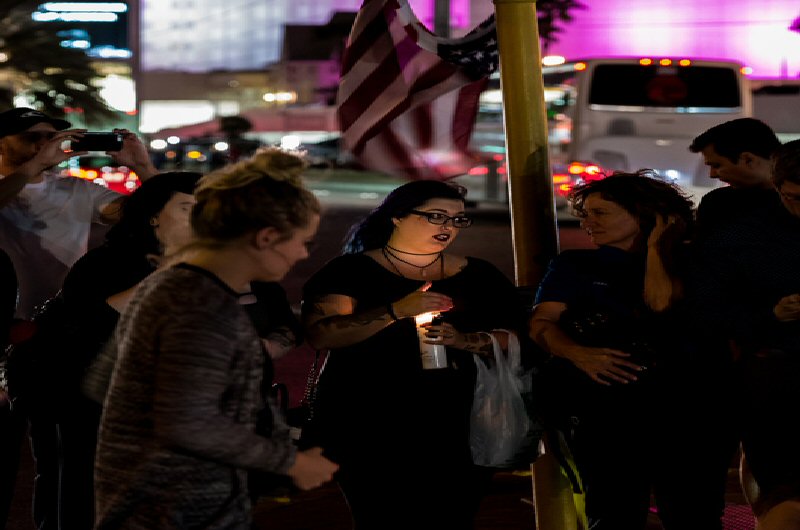In the wake of mass shootings, the question arises: Who will compensate the victims? As courts address the issue, insurers seek to restrict what could be a huge exposure.
When shots fly
Who’s liable and who’s covered?
By Joseph S. Harrington, CPCU
Andrew Torba bristles at the idea that his social media platform is responsible for the actions of the man who killed 11 people and wounded six others in a Pittsburgh synagogue in October 2018. Torba is the founder and CEO of Gab.com, a network that was used by shooter to post anti-Semitic comments.
“I was horrified that this alleged terrorist was on our site,” Torba said in an interview with a local CBS affiliate after the tragedy. It was wrong, Torba added, “for the media to attack us and blame us for these horrific, terroristic actions of one man who bears the sole responsibility for this.”
Torba will have something more immediate than the media to worry about, however, if victims and survivors of the synagogue shooting decide to sue Gab.com for their injuries, physical and emotional.
If one thing is likely to drive innovation in liability law, it’s the growing number of uncompensated victims, and mass shootings create plenty of those.
It certainly would be a stretch to lodge a successful bodily injury claim against an organization over comments made by someone it did not know or control. But if Gab finds itself on the receiving end of an inventive complaint, it will probably be for the same reason that arises after other shootings: There may be no one else who can be held liable.
Uncompensated victims
As the Pittsburgh survivors prepare their response, MGM Resorts and organizers of the Route 91 Harvest music festival are dealing with lawsuits charging them with negligence in connection with the October 2017 mass shooting in Las Vegas.
The track record for plaintiffs in such cases is mixed at best. In recent years, courts found that neither Virginia Tech University nor the operators of a movie theater in Aurora, Colorado, could be held liable for injuries sustained during mass shootings that were determined to be unforeseeable.
Nonetheless, as they are faced with the loss of loved ones or lifelong medical conditions, shooting victims sue other parties with potential liability and insurance coverage. These include owners and operators of premises where a shooting occurred, acquaintances of the perpetrator, public safety departments, and social service agencies responsible for monitoring and/or treating a perpetrator.
Given that common pattern, it is highly likely that someone is investigating whether the Pittsburgh shooter’s online exchanges raised any red flags or motivated him to act.
Shooting victims bring compelling cases, and we shouldn’t be surprised to see judges and juries challenge conventional understandings of liability if they believe it is necessary to achieve justice. If one thing is likely to drive innovation in liability law, it’s the growing number of uncompensated victims, and mass shootings create plenty of those.
Criminal perpetrators rarely have insurance or accessible assets to compensate injured persons or their survivors. Also, intentional injury exclusions in homeowners, personal liability, and commercial general liability policies generally preclude coverage for shootings committed by adults. Parents or guardians of minor shooters may be covered for liability, but their policy limits are rarely high enough to adequately compensate multiple victims.
Finally, victims have little chance for recovery against the manufacturers or distributors of firearms, as they are protected under the 2005 federal Protection of Lawful Commerce in Arms Act (PLCAA) and if they follow the law cannot be held liable for illegal use of their products by others.
Who pays?
So, if victims of firearms violence generally cannot recover from a perpetrator or from those who profit from commerce in firearms, who pays the costs for mass shootings? That question is being addressed in a Broward County, Florida court in a case related to the February 2018 shooting at Marjory Stoneman Douglas High School in Parkland, Florida.
One question at issue in the Parkland case is the application of a state law regarding the school district’s sovereign immunity from civil liability, but insurers will be watching to see how the court defines an “occurrence” for the purposes of liability coverage.
In the wake of the shootings, the Broward County school district was sued for negligence. The third- party administrator of the district’s self-insurance program responded that “. . . this unfortunate and tragic incident involves multiple parties and is being handled as a multi‐party claim under one occurrence.”
If that interpretation is upheld, the district will be liable for $200,000 in damages per victim, but only up to $300,000 overall, the per occurrence limit under Florida’s sovereign immunity statute. That $300,000 would have to be divided among families of some 40 victims who were killed, wounded, or traumatized.
Not surprisingly, attorneys for the victims have challenged the TPA’s interpretation, arguing that:
“. . . the ‘one occurrence’ under the facts of this shooting refers to each separate shot that resulted in a separate injury to a separate victim. Each shot fired constitutes a separate occurrence . . .”
As of this writing the court had yet to rule on that motion.
Implications
Liability insurers can see the implications if the plaintiffs prevail in this matter. If each wound to each victim is regarded as a separate occurrence, the exposure for the school district grows exponentially, as it would be liable for the $200,000 limit for each of 40 or more victims.
In making their argument, the plaintiffs have some backing in Florida law. In 2003 the Florida Supreme Court ruled that gunshot injuries incurred by two victims in the same incident constituted two separate occurrences under the liability policy of the venue where the incident occurred.
In that case, Koikos v. Travelers, the insurer was required to pay up to the per occurrence limit for injuries to each of the two victims, but the court explicitly noted that the insurer’s liability was capped by the policy’s annual aggregate limit.
Thus, even if the Broward County court rules for the plaintiffs regarding the definition of an occurrence, most general liability policies would limit the extent of their exposure to the $300,000 established by Florida’s sovereign immunity statute. Still, such a ruling would require insurers to scrutinize the gap between their occurrence and aggregate limits.
A final note: The TPA in the Broward case notes that Florida’s sovereign immunity statute provides for victims to recover additional funds through an act of the state legislature. That point raises a bigger question: Should—and will—the general public pay for costs created by a violent criminal? And if the public chooses not to do so, who will?






